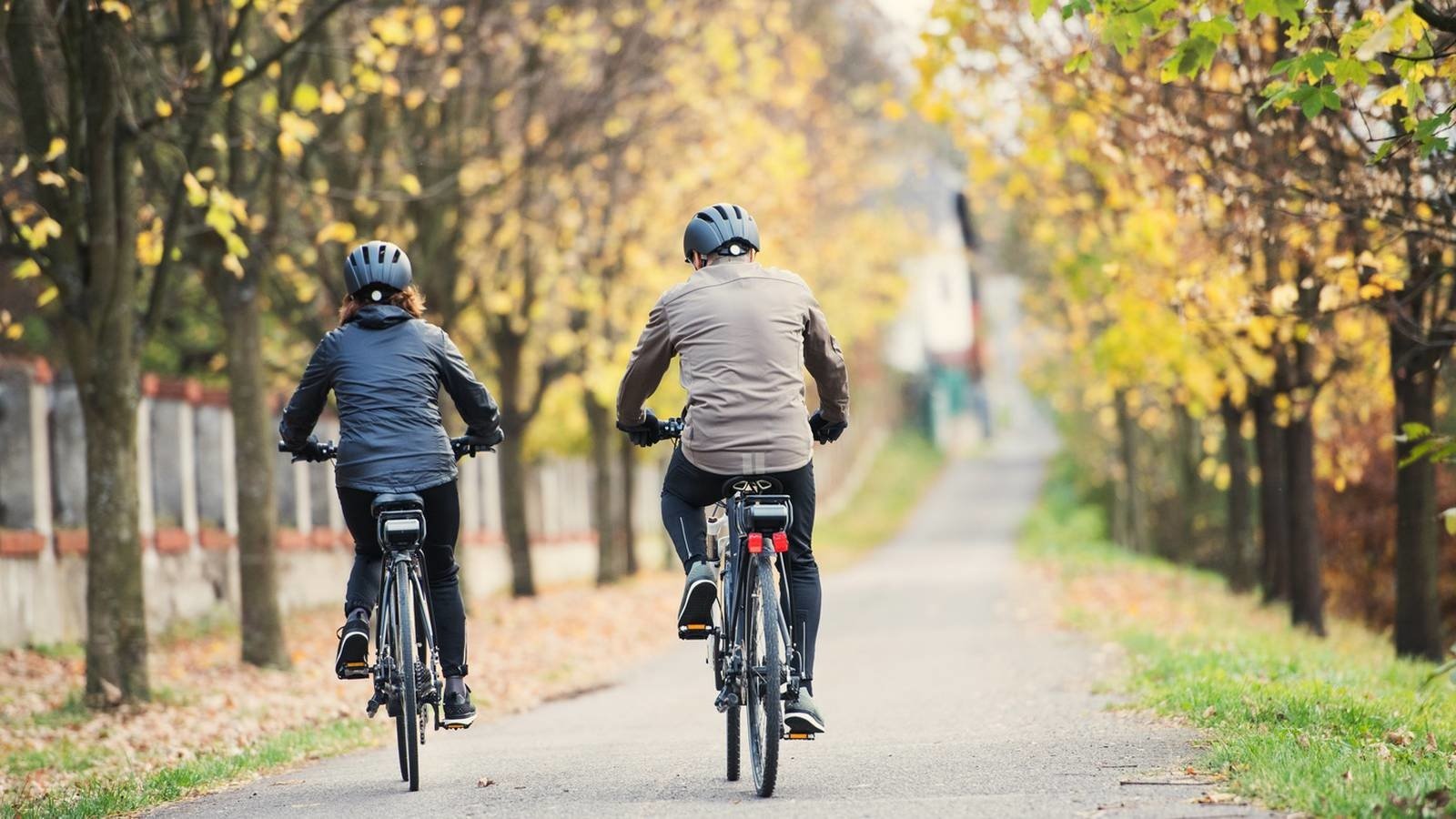Is riding an electric bike good exercise, or just convenient transportation?
- Posted on
- By Gretchen Reynolds
- 0

Does riding an electric bike to work count as exercise, and not just a mode of transportation?
It can, if you ride right, according to a pragmatic new study comparing the physiological effects of e-bikes and standard road bicycles during a simulated commute.
Does riding an electric bike to work count as exercise, and not just a mode of transportation?
It can, if you ride right, according to a pragmatic new study comparing the physiological effects of e-bikes and standard road bicycles during a simulated commute. The study, which involved riders new to e-cycling, found that most could complete their commutes faster and with less effort on e-bikes than standard bicycles, while elevating their breathing and heart rates enough to get a meaningful workout.
But the benefits varied and depended, to some extent, on how people’s bikes were adjusted and how they adjusted to the bikes. The findings have particular relevance at the moment, as pandemic restrictions loosen and offices reopen, and many of us consider options other than packed trains to move ourselves from our homes to elsewhere.
Few people bike to work. Asked why, many tell researchers that bike commuting requires too much time, perspiration and accident risk. Simultaneously, though, people report a growing interest in improving their health and reducing their ecological impact by driving less.
In theory, both these hopes and concerns could be met or minimised with e-bikes. An alluring technological compromise between a standard, self-powered bicycle and a scooter, e-bikes look almost like regular bikes but are fitted with battery-powered electric motors that assist pedalling, slightly juicing each stroke.
Tailwind
With most e-bikes, this assistance is small, similar to riding with a placid tailwind, and ceases once you reach a maximum speed of about 30km/h or stop pedalling. The motor will not turn the pedals for you.
Essentially, e-bikes are designed to make riding less taxing, which means commuters should arrive at their destinations more swiftly and with less sweat. They can also provide a psychological boost, helping riders feel capable of tackling hills they might otherwise avoid. But whether they also complete a workout while e-riding has been less clear.
So, for the new study, which was published in March in the Translational Journal of the American College of Sports Medicine, researchers at Miami University in Oxford, Ohio decided to ask inexperienced cyclists to faux-commute. To do so, they recruited 30 local men and women, aged 19 to 61, and invited them to the physiology lab to check their fitness levels, along with their current attitudes about e-bikes and commuting.
Then, they equipped each volunteer with a standard road bike and an e-bike and asked them to commute on each bike at their preferred pace for approximately 5km. The cyclists pedalled around a flat loop course, once on the road bikes and twice with the e-bike. On one of these rides, their bike was set to a low level of pedal assistance, and on the other, the oomph was upped until the motor sent more than 200 watts of power to the pedals. Throughout, the commuters wore timers, heart rate monitors and facial masks to measure their oxygen consumption.
Zippy
Afterward, to no one’s surprise, the scientists found that the motorised bikes were zippy. On e-bikes, at either assistance level, riders covered the 5km several minutes faster than on the standard bike – about 11 or 12 minutes on an e-bike, on average, compared to about 14 minutes on a regular bike. They also reported that riding the e-bike felt easier. Even so, their heart rates and respiration generally rose enough for those commutes to qualify as moderate exercise, based on standard physiological benchmarks, the scientists decided, and should, over time, contribute to health and fitness.
But the cyclists’ results were not all uniform or constructive. A few riders’ efforts, especially when they used the higher assistance setting on the e-bikes, were too physiologically mild to count as moderate exercise. Almost everyone also burned about 30 per cent fewer calories while e-biking than while road riding – 344 to 422 calories on average on an e-bike versus 505 calories on a regular bike – which may be a consideration if someone is hoping to use bike commuting to help lose weight.
And several riders told the researchers they worried about safety and control on the e-bikes, although most, after the two rides, reported greater confidence in their bike-handling skills, and found the e-commutes, compared to the road biking, more fun.
Small-scale
This study, though, was obviously small-scale and short-term, involving only three brief pseudo-commutes. Still, the findings suggest that "riding an e-bike, like other forms of active transport, can be as good for the person doing it as for the environment," says Helaine Alessio, the chair of the department of kinesiology at Miami University, who led the new study with her colleague Kyle Timmerman and others.
But to increase your potential health benefits the most, she says, keep the pedal assistance level set as low as is comfortable for you. Also, for the sake of safety, practice riding a new e-bike – or any standard bike – on a lightly trafficked route until you feel poised and secure with bike handling.
Wear bright, visible clothing, too, and “choose your commuting route wisely,” Dr Alessio says. “Look for bike paths and bike lanes whenever possible, even if you need to go a little bit out of your way.” – New York Times


Comments
Be the first to comment...